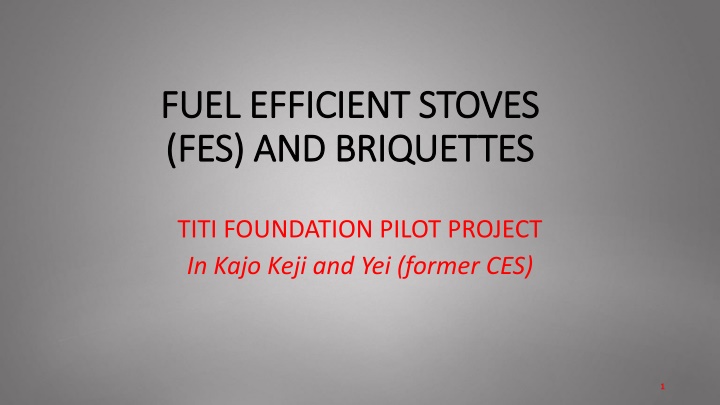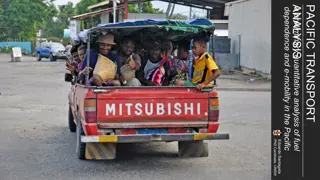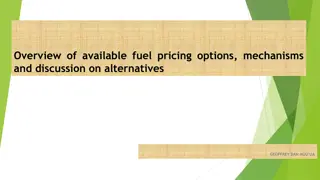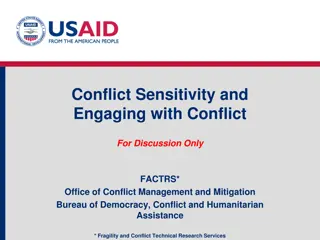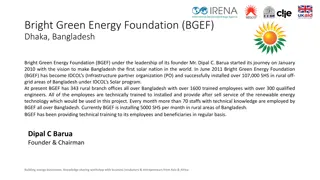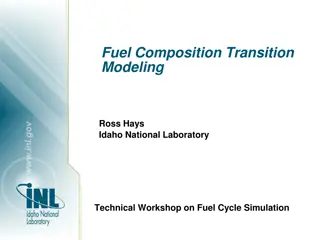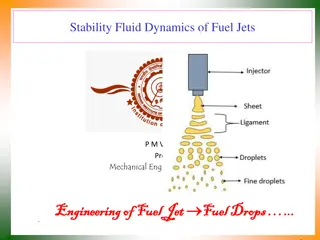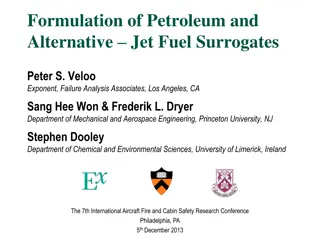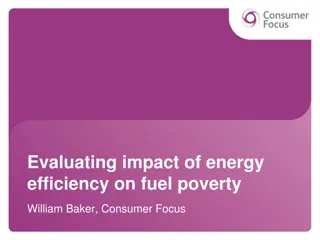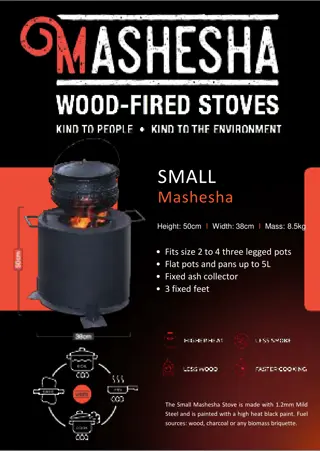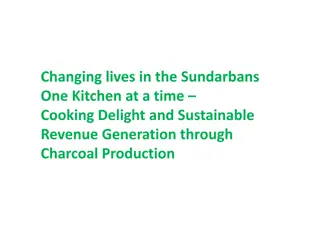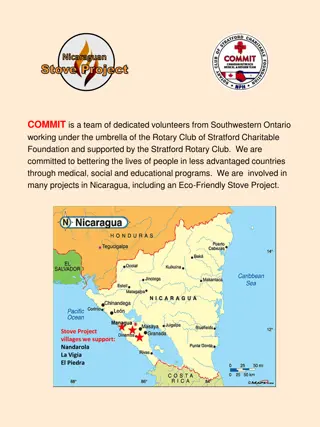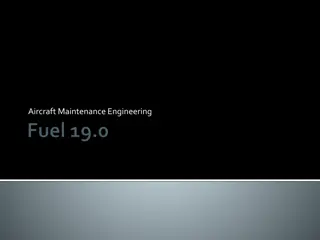Tackling Conflict through Fuel-Efficient Stoves and Briquettes
This pilot project by TITI Foundation in Kajo Keji and Yei aims to reduce conflict over fuel wood resources by promoting alternative, sustainable energy solutions like fuel-efficient stoves and briquettes. These technologies not only address environmental conservation but also mitigate gender-based violence risks and promote community resilience in crisis situations.
Download Presentation

Please find below an Image/Link to download the presentation.
The content on the website is provided AS IS for your information and personal use only. It may not be sold, licensed, or shared on other websites without obtaining consent from the author.If you encounter any issues during the download, it is possible that the publisher has removed the file from their server.
You are allowed to download the files provided on this website for personal or commercial use, subject to the condition that they are used lawfully. All files are the property of their respective owners.
The content on the website is provided AS IS for your information and personal use only. It may not be sold, licensed, or shared on other websites without obtaining consent from the author.
E N D
Presentation Transcript
FUEL EFFICIENT STOVES FUEL EFFICIENT STOVES (FES) AND BRIQUETTES (FES) AND BRIQUETTES TITI FOUNDATION PILOT PROJECT In Kajo Keji and Yei (former CES) 1
INTRODUCTION INTRODUCTION This project was aimed at reducing competition and conflict over access to fuel wood resources through local production of alternative fuels and energy-efficient technologies for domestic and productive use. It also studies the linkages between fuel-efficient stoves and conflict mitigation. The long-standing conflict has intensified tensions among communities (internally) in scale and scope and have consequently exacerbated protection concerns. The project was structured with a focus on Sustainable Development Goal 7: Ensure access to affordable, reliable, sustainable and modern energy for all . During crisis, access even to preferred forms of traditional biomass may be severely constrained by factors such as: forced displacement violent and often long-standing conflict; climatic, environmental and economic shocks and stresses; the breakdown of local institutions such as those regulating access and management of natural resources. 2
WHY FES AND BRIQUETTES WHY FES AND BRIQUETTES The project aimed at reducing reliance on wood fuel by providing clean technologies that are more safer, local and familiar to the women with key considerations on: Conflict mitigation: The fuel efficient stoves and briquettes reduces conflict arising from natural and man-made disasters such as drought faced by populations in protracted crisis situations, who depend on fuel and energy for cooking. E.g. Drought drives people into other areas in search of natural resources which may increase tension and conflict between various livelihood groups. As the availability of wood fuel resources declined, conflict increased in the areas with high numbers of displaced people. Inter communal tension and conflict arose between communities as a result of the combined fuel needs of displaced populations and their hosts. In these situations, gender-based violence is also liable to increase as fuelwood collectors are attacked or raped . Reduced risk of GBV: time, distance and frequency of firewood collection dropped , therefore, the exposure of violence associated with GBV was reduced. (forests act as the perfect sites for rape, abductions, assaults and revenge killing). The FSNMS reports from 2017 report that most women and girls face gender based violence in their search for firewood. The long distance they have to walk to the forests, the frequency of firewood collection and the time spent in the forests have put the women and girls into greater danger of violence. Environmental conservation: The fuel efficient stoves and briquettes reduces deforestation. The energy needs of returnees and IDPs living in camps can increase pressure on surrounding forests and woodlands, ultimately causing a high risk of deforestation. In these contexts, forest management can face several challenges, including overharvesting of fuel wood, uncertain land and tree tenure regimes and conflict and tension between displaced and host communities. The increased population pressure may heighten competition for resources and increase the risk of conflict between displaced and host communities. Furthermore, the social structures that may previously have provided protection are often no longer in place in displacement settings. Since they are made from waste products (e.g. animal excreta and farm waste) , the FES and briquettes are a complete solution to waste management challenges through prevention of natural hazards like flooding, resulting from clogged channels. 3
SUCCESS STORIES: SUCCESS STORIES: What wound up better than expected??? Community engagement: Buy in from the community was done through the use of fair and inclusive processes such as the community engagement approach, policies and actions for restoration of degraded areas (e.g. tree planting) by affected and at-risk populations. This helped to strengthen the social cohesion by ensuring that fuel and energy resources are managed in a sustainable, conflict-sensitive manner with the full participation of all relevant stakeholders. Economic empowerment: the original objective of the project was to mitigate GBV risks associated with firewood collection. It was surprising to see the beneficiaries turning this into an income generating activity, where they would help, train other women to construct the stoves so as to earn some money. They say since they started doing this as a business, their lives have transformed in terms of economic empowerment. High personal investment on the model: It was motivating to see the community putting so much effort to individualize the project. The most speaking moments was when beneficiaries came and requested the training teams to go and see how s/he had personalized the model, improving it with artistic and innovative modifications 4
LESSONS LEARNT LESSONS LEARNT What to do different next time??? Involve men: at the beginning, the project targeted 1,400 women with the notion that they are the only ones tasked with household chores. Failure to involve the men only brought more exposure to GBV risks as fuel wood collectors are attacked. Charcoal producers (mostly men) sometimes compete with pastoralists for access to trees that are used to produce livestock fodder and charcoal production. The fuel efficient stoves are not key, briquettes are: the stoves only reduced the frequency of firewood collection. It therefore only reduced the exposure without completely eradicating it. Titi foundation did not at first prioritize this activity, now we know better!! 5
QUESTIONS/ COMMENTS??? QUESTIONS/ COMMENTS??? THANK YOU!!! 6
